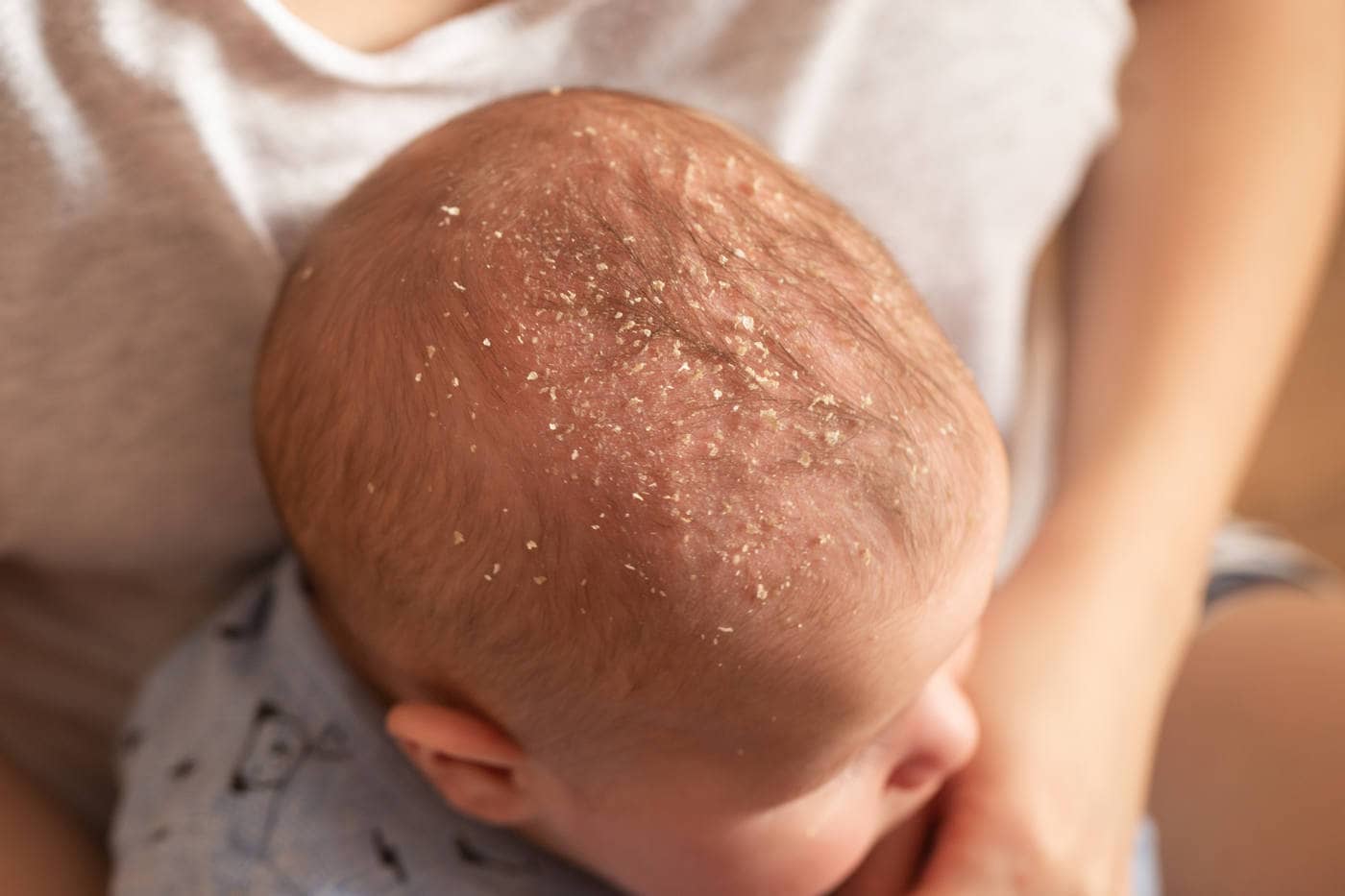Cradle Cap: Symptoms, Causes, Treatment
What are the symptoms of cradle cap?
Cradle cap, also known as infantile seborrheic dermatitis, is a common skin condition that primarily affects infants. It is characterized by greasy, yellowish, or brown scales on the scalp, although it can also occur on other parts of the body. The symptoms of cradle cap may include:
- Thick, crusty scales: Cradle cap often presents as thick, crusty scales on the scalp. These scales can be yellowish, brown, or white in color.
- Oily or greasy patches: The affected areas of the scalp may appear oily or greasy.
- Flaking: As the scales loosen, they may flake off, leaving behind smaller, white flakes.
- Mild redness: The skin underneath the scales may appear mildly red or inflamed.
- Itching: In some cases, cradle cap may be itchy, although this is less common in infants.
Cradle cap is a harmless and usually self-limiting condition that typically resolves on its own within a few months. However, it can be persistent in some cases. Treatment for cradle cap may include gentle washing and shampooing of the scalp, followed by gentle brushing or combing to remove scales. In some cases, a healthcare provider may recommend a medicated shampoo or lotion to help loosen and remove scales. If cradle cap is severe or persistent, a healthcare provider may recommend further evaluation and treatment.
What are the causes of cradle cap?
The exact cause of cradle cap is not fully understood, but it is thought to be related to overproduction of oil (sebum) in the oil glands and hair follicles of the skin. Several factors may contribute to the development of cradle cap, including:
- Yeast (fungus) overgrowth: A common fungus called Malassezia may play a role in the development of cradle cap. This fungus is normally present on the skin, but in some cases, it may overgrow and contribute to the development of cradle cap.
- Excess oil production: Infants have immature oil glands that may produce excess oil, leading to the accumulation of oil and dead skin cells on the scalp, which can contribute to the formation of cradle cap.
- Hormones: Hormones passed from the mother to the baby before birth may stimulate the baby’s oil glands, contributing to the development of cradle cap.
- Bacterial colonization: Bacteria on the skin may play a role in the development of cradle cap, although their exact role is not well understood.
- Environmental factors: Factors such as cold weather, dry indoor air, and harsh soaps or shampoos may contribute to the development or worsening of cradle cap.
Cradle cap is a common and harmless condition that usually resolves on its own within a few months. It is not caused by poor hygiene or allergies, and it is not contagious. Treatment is usually focused on gentle washing and removal of scales, although in some cases, a healthcare provider may recommend a medicated shampoo or lotion to help control symptoms.
What is the treatment for cradle cap?
Cradle cap is a common and usually harmless condition that typically resolves on its own within a few months. However, if cradle cap is persistent or causing discomfort, there are several treatments that may help manage the symptoms. Some common treatments for cradle cap include:
- Gentle washing: Regular washing with a mild baby shampoo can help remove oil and scales from the scalp. Gently massaging the scalp with your fingers or a soft brush can help loosen the scales before washing.
- Oil or lotion application: Applying a small amount of mineral oil, baby oil, or a gentle moisturizing lotion to the scalp can help soften and loosen the scales. Leave the oil or lotion on for a few minutes before gently brushing or combing the scales out.
- Medicated shampoos: In some cases, a healthcare provider may recommend an over-the-counter medicated shampoo containing ingredients such as salicylic acid, selenium sulfide, or ketoconazole to help control cradle cap. Follow the instructions on the product label and consult with a healthcare provider before using any medicated shampoo on an infant.
- Hydrocortisone cream: In cases of severe inflammation or itching, a healthcare provider may recommend a mild hydrocortisone cream to help reduce inflammation and discomfort.
- Avoiding harsh products: Avoid using harsh soaps, shampoos, or treatments on the baby’s scalp, as these can irritate the skin and worsen cradle cap.
It’s important to note that picking or scratching at the scales can lead to skin irritation and may increase the risk of infection. If cradle cap is severe, persistent, or causing significant discomfort, it’s best to consult with a healthcare provider for further evaluation and treatment.




